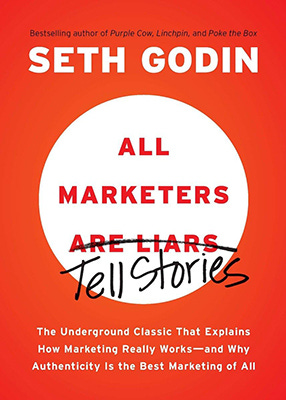Hello there! Matt here from MessageUp.
Welcome to the October edition of our newsletter, where you’ll find:
A discussion on when it’s appropriate to link your marketing to a popular news story—a.k.a. “jumping on the bandwagon”.
Summaries of our latest blog posts, the most recent of which offers valuable tips on how to market new technology to B2B buyers.
A book review about the power of authentic storytelling.
And three article reviews, covering building a Founder Brand, effectively repurposing content across multiple channels, and whether certain concepts are only suitable for B2C and not B2B marketing.
Hopefully you’ll find something here that’s relevant and helpful to your B2B marketing efforts.
As always, you can see more of our content on LinkedIn.
Thanks for spending a slice of your precious time with us!
Cheers,
~ Matt
To Bandwagon or Not to Bandwagon…
Or: Whether you should link your marketing to popular news stories.
Drawing attention to your brand and the solutions your company offers is difficult at the best of times.
This has become especially true after the shift from in-person to digital engagement—which isn’t absolute but has been dramatic—and the explosion of AI-generated / AI-assisted content.
With most of your brand awareness and business development expected to happen online, it’s imperative to stand out amid a sea of sameness.
Arguably, that’s today’s version of “the best of times.”
Times get much leaner when headline news stories dominate the channel(s) on which you’re trying to get seen.
This can range from natural disasters (our thoughts are with those in the southeastern US who have endured back-to-back powerful hurricanes) to war (Middle East, Ukraine) to technological announcements (Tesla, Nvidia) to elections, to judicial rulings, and more.
When news—and people’s reactions to it—are dominating the traffic on your preferred channel, it’s tempting to look for ways of riding that wave.
Why not write a post commenting on the headline of the day, or produce an advert drawing attention to your brand or product in context of the news?
In other words, why not jump on the bandwagon?
The word "bandwagon" was coined by the circus owner and showman, P.T. Barnum, referring to the wagon that carried his circus band.
The phrase "jump on the bandwagon" originated in 1848 when a clown named Dan Rice used his circus bandwagon to transport politicians around town. The associated music drew people to the area, swelling the audience that would hear the politicians’ campaign speeches.
Today, "jump on the bandwagon" is used to mean joining an activity that has become popular—or aligning your opinion with one that has become popular—so that you can share in its success.
For this approach to be effective, you still have to find a way to stand out.
Simply parroting other people’s views won’t be enough. You’ll become part of the noise and might lose credibility by being seen as a copycat.
As with any content marketing endeavor, the keys to success lie in being authentic and expressing a valuable point of view.
If you—and your business—have nothing much to do with the news that’s breaking, you can’t write authentically about it.
Harkening back to the expression’s original meaning, that would be like Regular Joe jumping on the circus bandwagon to air their views, without being one of the candidates up for election. Who’s going to pay attention to that?
If there is a credible link between what your business does and the news of the day, then ask yourself: What do we have to say about this that’s both authentic and valuable?
An authentic response has to come from a place of understanding and carry a message of substance.
For example, if your business or its employees have been directly affected by a natural disaster and you’re investing time and money to help the recovery efforts, that might be something worth publishing about—but only if you’re sharing useful information.
Or, if your business will be affected by a technological announcement or breakthrough, sharing how you see the sector evolving could show valuable thought leadership that your target audience will appreciate.
War and politics (which are inextricably linked) are dangerous bandwagons to ride.
You’re almost certain to alarm, if not alienate, some of your target audience members at the expense of pleasing others.
Whether it’s appropriate for company executives to make politically motivated statements on their individual accounts is open to debate. Sometimes it draws positive attention to them and the company. Other times, it backfires.
In my view, it’s almost never a good idea on a company channel or account.
So, what can you do if the news is drowning out your marketing messages?
First, you can wait.
News cycles are shorter today than ever. Even unthinkable tragedies quickly slip from the headlines as the pundits look for something new and shocking with which to grab eyeballs.
Pay attention to what’s going on in the world and try to publish your content when the news flow is ebbing.
Second, you can up your game.
Standing out on a busy channel is really difficult, but it’s not impossible.
If you publish sufficiently valuable content at a regular clip, your chances of getting seen are greater than zero.
If you’re willing to pay to boost your posts (or buy keywords to drive search-based traffic) you’ll improve your odds even further.
Whether this is sufficient to catch the attention of your target audience will be business specific and only discoverable through experimentation.
Third, you can switch channels.
While buyer’s journey mapping and other techniques might point to a particular channel as being the place where your target audience turns most often for information, that doesn’t necessarily mean you can reach them there.
If the primo channel is swamped, consider shifting your focus to one that’s less challenging.
Your target audience members might spend less time on the new channel but at least you stand a chance of catching their attention when they do.
Once again, the success (or not) of this tactic will only be discoverable through carefully designed marketing experiments.
Finally, be aware of the bandwagons you’re choosing to jump on (or off) and make informed decisions in real time.
What’s dominating the headlines—or a channel—is constantly shifting.
You need a process for understanding, evaluating, and deciding how to react to those changes.
The decision whether to jump on a particular bandwagon or not shouldn’t be a matter of whim or based on gut-feel. It should be a logical outcome from your marketing strategy.
Recent Posts on The Framework Blog
Essential Tips for Marketing New Solutions to B2B Buyers
(October 9, 2024)
B2B marketing is hard enough when you’re an established business selling proven products and services.
Things get exponentially worse when you’re a new entrant or you’re trying to sell a new solution—or both.
This post sets aside the issues related to being a new player and focuses on what it takes to market a new idea to a B2B audience, suggesting ten essential tactics for you to employ.
Should B2B Marketing Focus on Individuals, Committees, or Accounts (September 4, 2024)
Plenty is written about personalized marketing to individuals, account-based marketing, and marketing to buying committees. So, where should your business focus its efforts?
The answer will depend on the maturity of your marketing efforts and your market understanding.
In this post, we explore this trifecta of marketing approaches and explain how the distribution of your marketing efforts should change as your business learns and grows.
Book Report
- Seth Godin (Hardback 2005, Paperback & Audiobook 2012)
Unlike some of the earlier reviews in this series, this month I’ve chosen a book that’s actually about marketing!
Seth Godin is a popular American author, entrepreneur, and public speaker. He has authored 18 best-selling books, including notable titles like Purple Cow and The Dip.
He is also known for his blog, Seth’s Blog, where he shares insights on marketing, entrepreneurship, and personal development.
Much of Godin’s work focuses on the importance of storytelling in marketing.
In All Marketers Are Liars, he argues that successful marketing is built on storytelling rather than mere facts or products, because consumers are not robotic, rational beings. Instead, they are emotional and readily influenced by narratives that resonate with their beliefs and goals.
Consequently, marketers must create authentic stories that align with the values and belief systems of their target audience members.
Godin suggests that rather than selling your product based on its features, you should focus on crafting a compelling narrative that captures the imagination and emotions of your target customer
By doing so, your brand can create a strong connection with its audience and foster greater customer loyalty.
He also warns against deceitful marketing practices.
While marketers are at liberty to manipulate people’s perceptions, genuine storytelling that’s rooted in truth will always prevail over the factually dishonest.
For me, the key takeaway from this book is that effective marketing is about understanding and shaping the stories that people tell themselves.
In a world overwhelmed with choices (which is even becoming true in the B2B domain), the ability to tell a meaningful story becomes our most powerful tool.
What We’ve Been Reading
This month’s articles cover three distinct aspects of B2B content marketing, from building a Founder Brand to effectively repurposing content across multiple channels to whether certain concepts are only suitable for B2C and not B2B marketing.
Whatever corner of the B2B landscape your business occupies, one or more of these topics is likely to affect your marketing strategy.
A Guide to Building your Founder Brand as a B2B Founder
Miracle Ndem, BenjaminDada.com, August 2024
This article is a little bit outside our content marketing “swim lane”, but we think it's important to occasionally share insights about marketing more broadly. The author shares some candid observations and advice about the point where person and product merge in an effective Founder Brand. Done well, this can significantly enhance the authentic, human connection between your brand and your audience.
A 6-Step Framework For Repurposing Content Effectively
Karolyn Raphael, Forbes Agency Council, October 2024
Repurposing content across multiple channels is a key strategy for reaching more people within the constraints of limited resources. The author explains a framework and methodology developed at her agency for amplifying the performance of your marketing and PR strategies. While this won't be applicable at early-stage businesses focused on 2-3 primary channels, it's a solid approach for those expanding their horizons and growing their marketing efforts.
Is This Applicable to B2B Marketing? Please Stop Asking
Mark Ritson, Marketing Week, March 2024
In this provocative piece, the author dispels the myth that certain marketing concepts are only suitable for B2C and not B2B. His case is based on logical argument and personal experience on both sides of the illusory fence. As he explains, the difference between disparate B2C challenges is no less than their difference from equally distinct B2B sectors.








